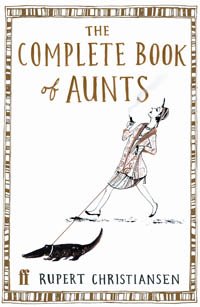
Although we hear it's not the one she reads in the new miniseries of Jane Eyre, in the novel, young Jane is mesmerised by the pictures of birds that appear on Thomas Bewick's
History of British Birds. Just as mesmerised, in fact, as were the young Brontës, who copied profusely from the book.
Today we hear of a new biography on this famous engraver:
Nature's Engraver: A Life of Thomas Bewick by Jenny Uglow.
From
The Guardian:
Shown Bewick's Birds, the 12-year-old Charlotte Brontë held the book close to her face, partly because she was shortsighted. But she examined the illustrations so minutely and at such length that others asked what she saw in them. This same book she later gave to the young Jane Eyre, who hides from the bully at Gateshead Hall behind the curtains of a window seat: "With Bewick on my knee, I was then happy." Today his appeal helps to sell jam, greetings cards, posters and books, wherever designers harness his small images to their purpose. No wonder Jenny Uglow claims they have become "woven into our imagined version of a rural past".
From
The Scotsman:
An outspoken radical politically at a time when seditious talk could lead to imprisonment (his formative years spanned the American War of Independence, the French Revolution of 1789 and the subsequent wars with France, and at home the imposition of the Corn Laws and accompanying years of social unrest), he was also a Romantic who decried the deleterious impact of industrialisation and enclosure on the landscape.
Sounds like the young Brontës could have been just as interested in his life too.
For Uglow, who has written magnificent biographies of Elizabeth Gaskell and Hogarth...
Ahem.
"He learnt his technique undoubtedly as an artisan, and if he hadn't had those long boring days, weeks, months, years doing dog collars and coffin plates he wouldn't have had the skill in his fingers," Uglow says.
Now there's a lesson.

Incidentally,
The Scotsman also carries another review of a book called
The Complete Book of Aunts by Rupert Christiansen (read the first chapter of the book
here) where we find Aunt Reed:
"Why are there aunts?" asked a baffled four-year-old of Rupert Christiansen's acquaintance, as the writer sat in the boy's parents' dining room talking about his latest book, which deals with this vexed question. It is one that might have been posed by Bertie Wooster, or Harry Potter, or even Jane Eyre, whose villainous aunt by marriage, Mrs Reed, was the author of all Charlotte Brontë's heroine's woes.
We wonder if he also looks at Aunt Branwell. Much maligned and ignored over the years, many biographies have also tried to show she wasn't the cold religious zelot they would have us believe. With this subject at hand, it's very appropriate she gave Tales of a Grandfather by their much-admired Walter Scott to her nephew and nieces one Christmas.
Fortunately not all aunts are like Aunt Reed! :)
 Categories: Books, Jane_Eyre
Categories: Books, Jane_Eyre











One wonders if Steveie Smith's formidable maternal aunt, whom she calls "the Lion", is included. Maybe portraits of fierce, loving, practical proto-feminsts are not fodder for such books?
ReplyDelete